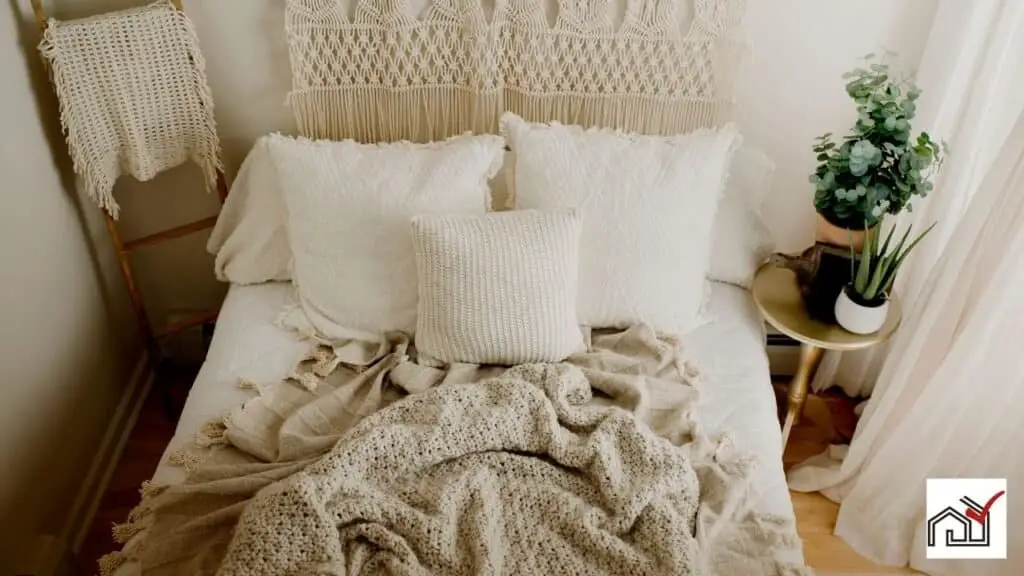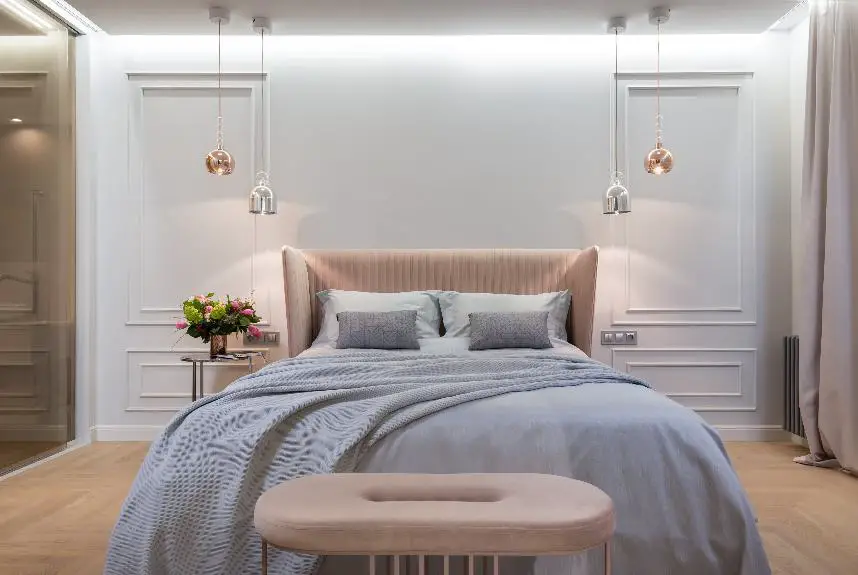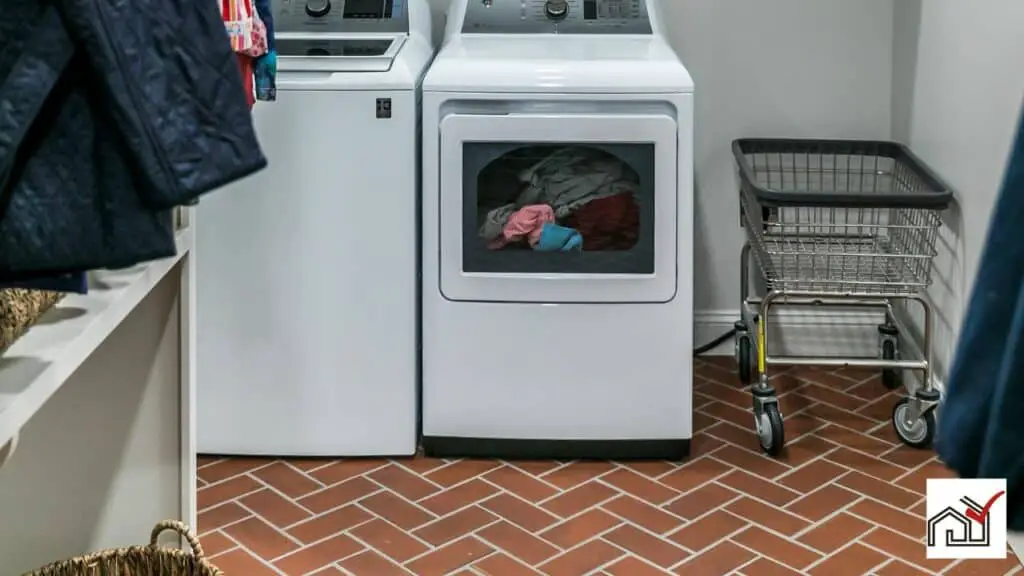A queen-sized bed is typically 60 inches wide and 80 inches long, making it a popular option for two people. Its size balances closeness with enough individual space for most couples. However, the right fit may depend on each person’s sleep habits, size, and movements at night.
Room dimensions and budget also influence the decision to choose a queen-sized bed. This overview considers if a queen bed is suitable for two, weighing its benefits and drawbacks against other choices on the market.
Understanding Queen Bed Dimensions
A queen bed measures 60 inches wide by 80 inches long, providing suitable space for two people to sleep comfortably. It balances closeness and personal space, typically preferred by couples. These standard dimensions offer a larger surface than a full bed, which is 54 inches wide by 75 inches long.
The queen bed’s additional 6 inches in width and 5 inches in length compared to a full bed provide more room for individual movement and comfort during sleep.
For a queen bed to fit well, a bedroom should be at least 10 by 10 feet, allowing space for other furniture and ease of movement.
A split queen bed, which consists of two separate mattresses, each measuring 30 inches by 80 inches, provides customizable comfort for two people while maintaining the overall dimensions of a standard queen bed.
Space Considerations for Couples
Couples should assess their sleep habits and comfort requirements when choosing between a queen or king size bed. A standard queen mattress typically provides a good balance of closeness and individual space. To fit a queen bed, a bedroom should ideally measure at least 10 x 10 feet, allowing space for movement and additional furniture.
For those who prefer more sleeping space, a king bed may be preferable, particularly for larger individuals or those who move a lot during sleep. A king bed’s wider dimensions can improve comfort, but it also requires a larger bedroom.
Many couples find a queen bed adequate, using king-size blankets to address bedding-sharing issues. A queen bed is a versatile option for various living situations and differing preferences.
The choice between a queen or king bed should be based on personal comfort, room size, and lifestyle, to ensure both partners have sufficient space to sleep well.
Pros and Cons of a Queen Bed
A queen bed is a good choice for two people, providing enough space for comfort while allowing closeness. It is a common choice as it suits various sleep styles and is generally spacious enough for two people to sleep comfortably without feeling restricted.
Compared to larger beds like king or California king, a queen bed is more affordable and fits better in different room sizes, which adds to its popularity.
On the downside, while cheaper than larger beds, a quality queen bed can still be a significant expense. Moving and setting up the bed can be difficult due to its size and weight. In smaller rooms, a queen bed may take up too much space.
Couples who move a lot in their sleep or those who prefer more space might find a queen bed too small. Taller individuals may also find the bed’s length insufficient, which can lead to discomfort. The suitability of a queen bed depends on the users’ specific needs and preferences.
Comparing Queen to Other Sizes
A queen bed measures 60 inches in width and is suitable for two people, offering a compromise between space and coziness. In comparison, a twin bed is much narrower at 38 inches, typically comfortable for one person. A full bed, or double bed, is 54 inches wide, which is narrower by 16 inches compared to a queen, making it less spacious for two people.
A king bed is wider than a queen by 16 inches, totaling 76 inches, providing ample space for two individuals. It allows for more personal space and comfort. The California King, at 72 inches wide and 84 inches long, is designed for taller individuals or those who prefer more legroom, though it is 4 inches narrower than a standard king bed.
When selecting a mattress, couples should consider the size of their bedroom and their preference for space and closeness. While the queen bed is versatile and commonly chosen, the king and California King offer more space and luxury.
Sleep Quality and Bed Size
Bed size affects sleep quality, especially for couples sharing a mattress. A queen bed, which is 60 by 80 inches, is often seen as a good balance for couples, providing both closeness and personal space.
The adequacy of a queen bed for two people depends on individual needs, such as how much they move in their sleep and their preference for closeness or space. Some couples find a queen bed comfortable and spacious enough, while others with a preference for more space or larger body sizes may choose a king bed to prevent fighting over the covers.
When choosing a bed size, it’s important to consider each person’s sleep habits, the inclusion of pets, cultural norms, and the bedroom size. The goal is to select a mattress size that allows both partners to sleep well, which is important for their health and relationship happiness.
Making the Right Choice
When choosing a bed size for couples, it’s important to consider each partner’s sleep habits and comfort. Many choose a queen mattress as it balances space for intimacy and individual comfort. However, a queen-sized bed may not be ideal for everyone.
The room’s size also affects the bed choice. A queen bed, which is 60 inches by 80 inches, requires a bedroom at least 10 x 10 feet for a comfortable fit and room for additional furniture. Queen beds are generally more affordable than king beds and offer a good compromise on space.
For those who are larger or move a lot in their sleep, a queen bed might be too small. Larger mattress sizes could provide a more restful sleep in such cases.
The best bed size depends on the couple’s needs, including how long they plan to use the bed and their personal comfort preferences. It’s important to assess all these factors carefully to make the right decision.





